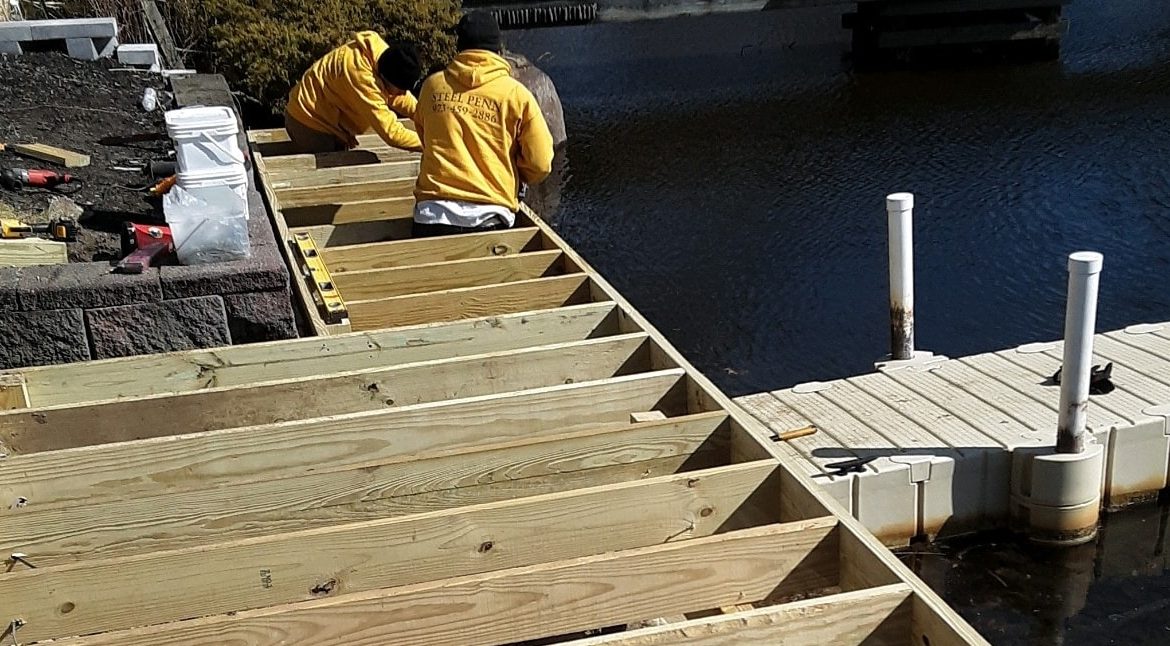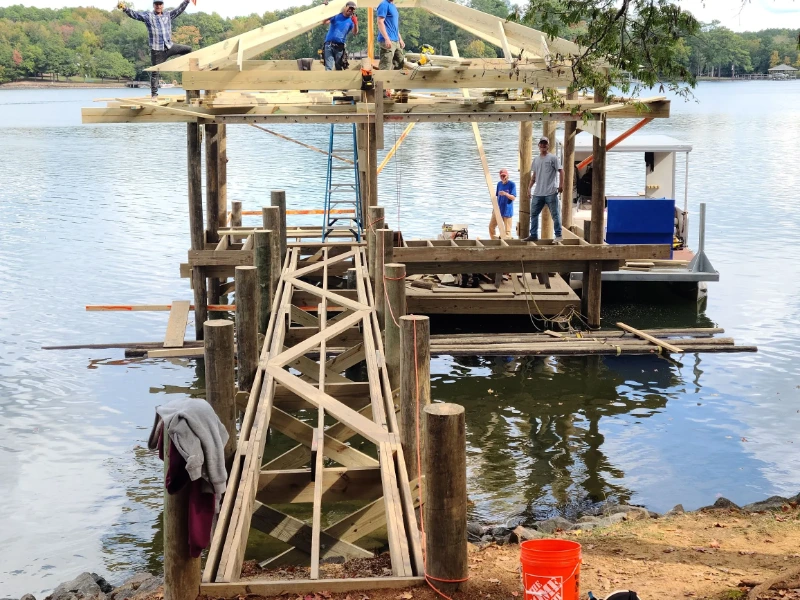How to Choose the Right Solution for Your Dock Repairs
How to Choose the Right Solution for Your Dock Repairs
Blog Article
Efficient Dock Repair Service Techniques: Making Certain Architectural Honesty
Guaranteeing the structural integrity of anchors with effective repair strategies is extremely important for the durability and safety of marine facilities. Ultimately, choosing the appropriate repair work products, such as corrosion-resistant alloys and composite products, is crucial for toughness.
Evaluating Dock Damage
Evaluating dock damage is an important initial step in ensuring the architectural stability and safety and security of any kind of docking facility. Key aspects to take a look at include the dock's structure, pilings, outdoor decking, and equipment (Dock Repairs).
Structural engineers or certified inspectors usually execute these evaluations utilizing specialized tools and strategies. For circumstances, undersea assessments might utilize finder tools or from another location ran cars (ROVs) to spot immersed damage. Above water, aesthetic evaluations are enhanced by using moisture meters and various other diagnostic devices to reveal underlying issues not instantly noticeable to the naked eye.

Deciding On Repair Service Products
Selecting the appropriate repair work materials is a critical action in the dock reconstruction process, one that straight affects the long life and performance of the repaired framework. Material option should be driven by factors such as environmental problems, load-bearing demands, and compatibility with existing dock components.
In enhancement to timber, composite products are increasingly prominent as a result of their durability and low upkeep needs. Composites, typically made from a mix of plastic and wood fibers, offer exceptional resistance to rot, insects, and UV damage. For steel anchors, picking corrosion-resistant alloys such as galvanized steel or marine-grade aluminum is important to avoid rust and ensure architectural integrity in saline water problems.
Epoxy resins and marine-grade sealers are vital for fixing splits and securing joints, supplying a waterproof obstacle and improving the dock's total stamina. By carefully selecting top quality products, dock fixings can achieve resilient outcomes, consequently protecting versus future destruction and ensuring safe, reputable use.
Structural Support Methods
Reliable architectural reinforcement strategies are critical in ensuring the security and long life of dock fixings. One fundamental technique includes making use of steel or composite support bars (rebar) within concrete structures. Rebar gives added tensile stamina, preventing fractures and dispersing lots a lot more evenly. This approach is especially efficient for anchors revealed to hefty loads or severe environmental conditions.
An additional essential method is the application of fiber-reinforced polymers (FRP) These materials supply high strength-to-weight ratios and exceptional resistance to corrosion, making them suitable for reinforcing concrete or wood docks. FRP can be used in sheets or strips and bound with epoxy materials to enhance structural integrity.
Supporting and anchoring systems also play an essential function in architectural reinforcement. Cross-bracing, using metal or wooden beam of lights, can combat lateral pressures, decreasing guiding and motion. Anchoring systems, such as helical piers or driven piles, give a secure foundation by moving lots to much deeper, a lot more stable dirt layers.
Finally, the combination of load-distribution plates can aid distribute weight a lot more evenly across the dock's surface, reference alleviating local anxiety points. These methods collectively guarantee that docks remain durable and risk-free, with visit the website the ability of standing up to the rigors of their operational setting.
Advanced Fixing Approaches

One more innovative method entails underwater welding, which enables repair services to be carried out without the requirement to dewater the location. This method is specifically advantageous for attending to structural problems in immersed dock elements, making sure marginal interruption to operations. Improved welding techniques, paired with robotic systems, supply accuracy and integrity, thus extending the life-span of the dock.
Furthermore, cathodic defense systems are carried out to stop corrosion in metallic dock structures. By utilizing sacrificial anodes or impressed existing systems, these strategies efficiently reduce the electrochemical processes that bring about material degeneration.
Lastly, advanced monitoring modern technologies, such as structural health and wellness surveillance (SHM) systems, provide real-time information on the condition of dock structures. These systems enable positive upkeep and prompt treatments, inevitably making sure the long-lasting structural integrity of the dock.
Upkeep and Avoidance
Upkeep and avoidance are fundamental concepts that underpin the longevity and safety of dock frameworks. Routine examinations are paramount, allowing for early discovery of deterioration, prospective weak points, and environmental influences. A positive technique, including regular look for corrosion, rot, and structural changes, mitigates expensive fixings and extends the dock's functional life.
Preventative actions must include applying safety finishings to metal components to protect versus corrosion and making use of treated wood to stand up to degeneration. Furthermore, making sure appropriate drainage and ventilation can avoid water accumulation, which is a typical root cause of architectural destruction. Get More Information Incorporating quality materials and adhering to maker standards throughout building and repair service phases additionally play crucial roles in enhancing toughness.

Educating workers in dock upkeep ideal techniques guarantees consistent application of safety nets. Leveraging technological developments, such as drones for assessments and sensing units for real-time surveillance, can additionally improve upkeep efforts. By focusing on maintenance and prevention, dock owners can guarantee architectural stability, functional safety and security, and economical management over the dock's lifespan.
Final Thought
In verdict, preserving the architectural stability of aquatic facilities demands extensive dock fixing methods. Advanced fixing techniques, coupled with normal upkeep practices, make sure the dock stays secure and functional under diverse ecological conditions.
Guaranteeing the structural stability of docks with effective fixing strategies is paramount for the durability and safety and security of aquatic facilities.Selecting the proper repair service products is a critical step in the dock repair procedure, one that directly influences the durability and efficiency of the repaired structure.Efficient architectural support strategies are essential in making certain the security and durability of dock repair work. By focusing on upkeep and prevention, dock proprietors can make certain architectural integrity, functional security, and economical management over the dock's lifespan.
In verdict, maintaining the structural integrity of aquatic facilities demands detailed dock repair service methods.
Report this page